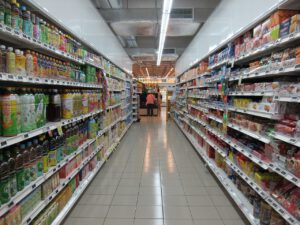
The need for a second coronavirus stimulus check is becoming more apparent when looking at shifts in spending habits. Americans are starting to spend less money on groceries as talks between the White House and Democrats remain at an impasse.
Q2 2020 hedge fund letters, conferences and more
Spending falls without second coronavirus stimulus check
The Wall Street Journal reports that spending on groceries is falling again as talks over a second coronavirus stimulus checks remain stalled. The extra $600 in weekly unemployment benefits also expired at the end of July, so jobless Americans are struggling even more.
Spending rebounded between May and July after the first round of coronavirus stimulus checks and the beginning of enhanced unemployment benefits. However, when the extra benefits expired, and the first round of coronavirus stimulus checks was long gone, spending on groceries declined. Analysts expect spending on discretionary items to fall as well.
Retailers plan for cutbacks in spending
Walmart executives also said recently that customers are spending less and less money since the end of enhanced unemployment benefits and after spending their coronavirus stimulus checks. They said consumers are nervous about money and job security without any additional stimulus aid.
Walmart U.S. CEO John Furner said last week on a conference call that people think they are spending more on food even though they’re eating out less. Thus, he said they will be “thoughtful” about how they plan the rest of the year “and react to changes in the trends we see from our shoppers.”
According to the WSJ, grocery store chains like Stop & Shop Supermarket are also expecting growth in consumer spending to be weak in the coming months, driven by economic uncertainty and the continued disruption of activities like eating in restaurants and attending sporting events.
Stop & Shop President Gordon Reid said consumers have gotten more price conscious in recent weeks. He expects prices to be difficult for them in the last quarter into early next year.
Data on grocery spending after coronavirus stimulus checks
Grocery store sales are still higher than they were last year, but sales growth has slowed from July to August. For example, growth in sales of frozen dinners averaged approximately 9% for the three weeks ending Aug. 16, but the growth was about 17% for the two weeks before that, based on data from the IRI CPG Demand Index.
Sales of cereal increased an average of 2% in those three weeks, but they grew an average of 6% in the two weeks before that. The data covers both in-store and online sales. Data on restaurant dining remained steady during that time, which demonstrates that it wasn’t a factor in slowing grocery spending.
That suggests that the end of enhanced unemployment and the lack of a second coronavirus stimulus check have driven a decline in grocery spending. IRI also found that some states with higher unemployment levels saw an even bigger deceleration in grocery spending growth.
The post Grocery spending falls without second coronavirus stimulus check appeared first on ValueWalk.
